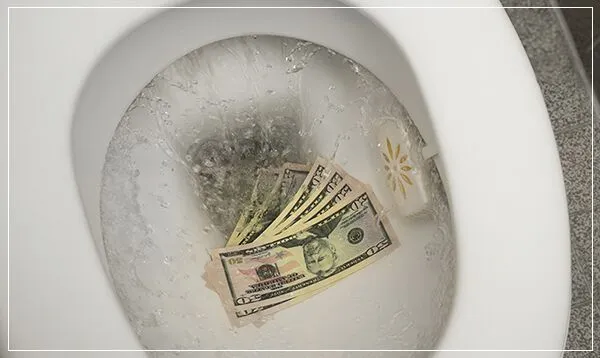Do you know which appliance in your home uses the most water? By far, the answer is your toilet. A standard toilet will use anywhere from 4-6 gallons per flush and if you multiply that by how many people are in your house times how many trips to the toilet they take, that number gets very big, very fast.
Now, add on to the number of gallons consumed by normal use a leaking, running toilet. A slow leak can waste 30 gallons of water per day, while a medium leak can needlessly waste around 250 gallons of fresh water per day! Considering the average person uses 80-100 gallons of water per day, that is a massive amount of wasted water. And this problem is not only bad for the pocketbook, it’s also bad for the state’s water supply. Beyond all of those reasons, it’s just plain annoying to have to listen to a constantly-running toilet as well. But the best news is that most of the issues with your toilet are really easy to solve yourself!
So, if you can hear the toilet running long after a flush, go through the following list to see if you can troubleshoot and then solve the problem. But, if you feel at any time like this is a bigger problem, call a licensed plumber you trust to come help you.
As with any DIY home improvement or maintenance project, if you ever feel you've gotten in over your head, stop and call a plumber you trust. If you don’t already have a plumber, call Any Hour Services and we would be happy to send one of our licensed plumbers from our plumbing or drain departments to help get you up and running again without any leaks, drips, runs, or mess.
